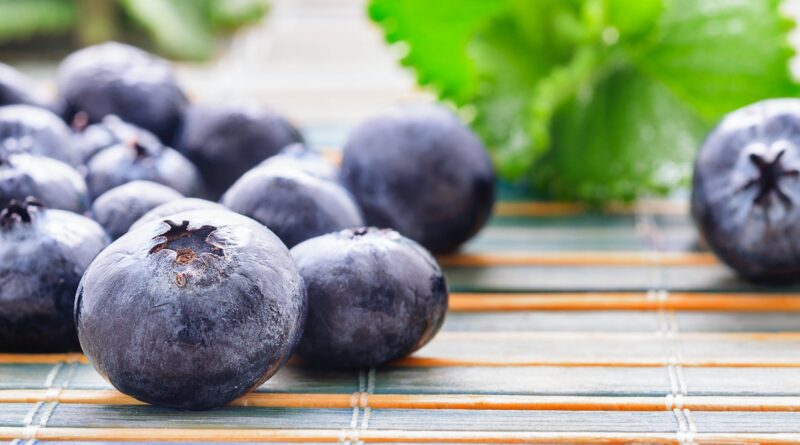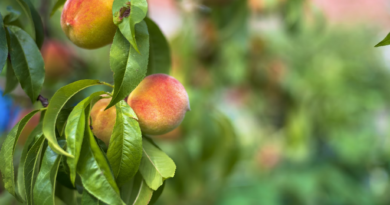Growing Blueberries On Your Allotment: A Comprehensive Guide to Cultivating Abundant Harvests and Delightful Flavors
Welcome to our comprehensive guide for allotment owners on growing blueberries! Prepare to embark on a journey of cultivating these delightful berries right in your own allotment. From variety selection to soil preparation, we’ll provide you with expert tips and practical advice to ensure a successful and fruitful blueberry-growing experience.
Varieties:
- ‘Bluecrop’: This popular variety is known for its high yield and excellent flavour. Its large berries are firm and sweet, making them perfect for fresh eating or baking.
- ‘Duke’: A reliable and versatile variety, ‘Duke’ produces abundant crops of medium-sized berries. They have a sweet-tart flavour and are ideal for eating fresh, baking, or making preserves.
- ‘Reka’: With its early ripening and large, sweet berries, ‘Reka’ is a favourite among blueberry enthusiasts. This compact variety is well-suited for smaller spaces and containers.

Soil Preparation: Blueberries thrive in acidic soil with a pH range of 4.0 to 5.5. Follow these steps to prepare the soil for your blueberry bushes:
- Test the soil pH:
Use a soil testing kit to determine the pH level of your soil. If it’s too alkaline, you’ll need to acidify the soil: To lower the pH and create an ideal environment for blueberries, incorporate acidic organic matter into the soil. This can include pine needles, well-rotted leaf mould, or peat moss. Work these materials into the top layer of soil, ensuring they are evenly distributed. - Mulch:
Blueberries appreciate a layer of organic mulch around their base to maintain moisture and suppress weeds. Apply a thick layer of pine bark or wood chips, making sure to leave space around the plant stem to prevent rotting. - Sunlight and Shelter:
Blueberries thrive in full sunlight, so choose a location in your allotment that receives at least six hours of direct sunlight daily. Additionally, consider providing some shelter from strong winds, as excessive exposure can damage the plants. - Planting Technique:
Dig a hole slightly larger than the root ball of your blueberry bush. Place the plant in the hole, ensuring the top of the root ball is level with the soil surface. Backfill with the amended soil mixture, gently firming it around the roots. Water thoroughly after planting to settle the soil. - Watering:
Blueberries require consistent moisture, especially during fruit development. Water deeply and regularly, ensuring the soil remains evenly moist but not waterlogged. Mulching helps retain moisture and reduces the need for frequent watering. - Pruning:
Pruning blueberries is essential for maintaining plant health and encouraging fruit production. In late winter or early spring, remove any dead, diseased, or crossing branches. Aim to maintain an open center and remove any weak or overcrowded shoots. This will promote airflow and sunlight penetration, reducing the risk of disease and improving fruit quality. - Fertilising:
Blueberries have specific nutritional requirements. Use an ericaceous or acid-loving fertiliser formulated for blueberries, following the manufacturer’s instructions. Apply the fertiliser in early spring and again after fruiting, avoiding late-season applications that can promote new growth susceptible to frost damage. - Pest and Disease Control:
Keep an eye out for common blueberry pests such as aphids, birds, and mites. Use organic pest control methods or physical barriers to protect your plants. Monitor for signs of diseases like powdery mildew or fruit rot, and promptly remove affected plant parts to prevent the spread.
Health Benefits:
- Blueberries are rich in antioxidants, which help protect the body against oxidative stress and promote overall health.
- They are a good source of vitamins C and K, as well as dietary fiber, supporting immune function and digestive health.
- Blueberries contain anthocyanins, which contribute to their vibrant color and have been associated with numerous health benefits, including improved brain function and heart health.

Meal Ideas:
- Enjoy fresh blueberries as a healthy snack on their own or incorporate them into breakfast cereals, pancakes, yogurt, or smoothies.
- Bake blueberries into muffins, pancakes, or pies for a delightful treat.
- Create homemade blueberry jams or preserves to enjoy throughout the year.
- Use blueberries in savory dishes like salads or sauces to add a touch of sweetness and vibrant color.
Growing blueberries in your allotment can be a truly rewarding and satisfying experience. With the right variety selection, proper soil preparation, and diligent care, you can enjoy a bountiful harvest of these delicious and nutritious berries.
By following the steps outlined in this comprehensive guide, you’ll be well on your way to creating a thriving blueberry patch in your allotment. From testing and acidifying the soil to providing adequate sunlight, water, and shelter, every aspect of blueberry cultivation has been covered. Remember to implement regular pruning and fertilising practices to ensure healthy growth and optimal fruit production.
The health benefits of blueberries are simply outstanding. Packed with antioxidants, vitamins, and dietary fiber, they contribute to overall well-being and are a delightful addition to any diet. Whether enjoyed fresh, incorporated into breakfasts and desserts, or used in savory dishes and preserves, blueberries offer endless culinary possibilities.
As an allotment owner, you have the unique opportunity to witness the entire lifecycle of blueberries, from tender blossoms to plump, ripe berries. The satisfaction of harvesting and savoring your homegrown blueberries is unmatched, providing a true sense of accomplishment and connection with nature.




